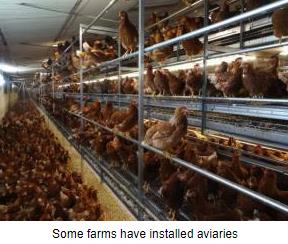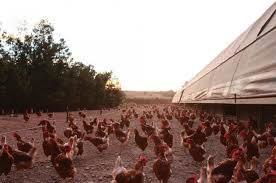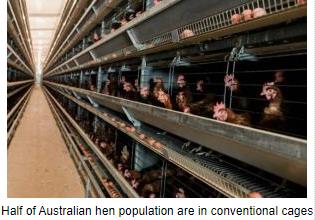 Following both state and federal initiatives, and responding to pressure from supermarkets, producers in Australia will be required to transition from conventional cages to alternative systems. With a 2023 population of 26 million in Australia, per capita consumption is estimated at 225 eggs. In addition to commercial production, it is estimated that close to 400,000 families have between two to ten hens in backyard flocks.
Following both state and federal initiatives, and responding to pressure from supermarkets, producers in Australia will be required to transition from conventional cages to alternative systems. With a 2023 population of 26 million in Australia, per capita consumption is estimated at 225 eggs. In addition to commercial production, it is estimated that close to 400,000 families have between two to ten hens in backyard flocks.
The program was initiated in 2015 with a projected completion date of 2025 allowing ten years for the transition. Caged eggs still represent half of current production representing approximately ten million hens to be re-housed less than three years from the target date for compliance.
The egg industry understandably now wishes to delay replacement of conventional cages until 2046 to preserve family farms and maintain required output. Australia can point to the shortage of eggs in New Zealand following an injudicious and rapid conversion from cages that resulted in many producers ceasing production and a shortage of table eggs.

Given the history of egg-borne Salmonella infection associated with free-range operations in Australia, coupled with the high labor input required, large producers are considering aviary installations as an alternative to cages. This will require high capital expenditure and appropriate training to manage flocks. In anticipation of conversion, many small-scale farmers have ceased production with a reduction in the supply of eggs and a consequential increase in shelf price.
 Egg farmers in Australia have an added burden of reliance on wheat as a major grain component of diets. This commodity has increased sharply in price following the invasion of Ukraine by the Russian Federation.
Egg farmers in Australia have an added burden of reliance on wheat as a major grain component of diets. This commodity has increased sharply in price following the invasion of Ukraine by the Russian Federation.
Phasing out conventional cages is generally a complicated issue requiring planning at the national and regional levels, availability of capital, and a higher level of technology all of which suggest more than a decade to convert to alternative systems. Based on experience in the U.S., transition from cages results in an alteration in the structure of an industry favoring concentration into fewer production complexes that can benefit from economies of scale and technology.